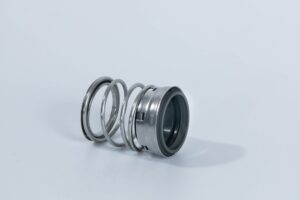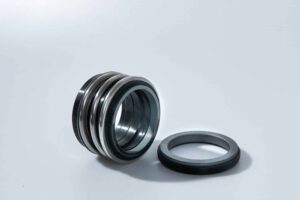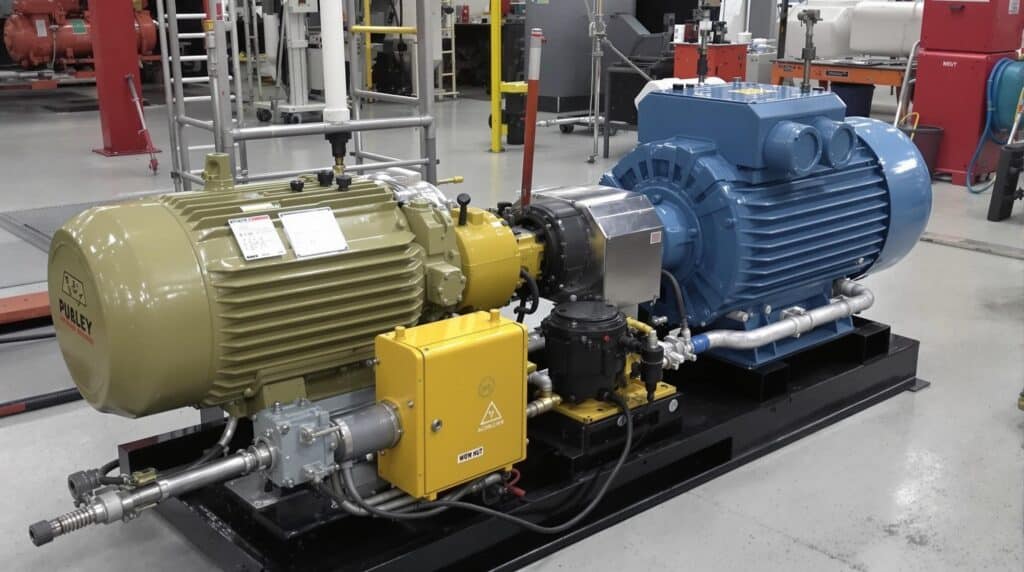Have you ever turned on your pump only to find it’s not delivering the expected output?
Low pump flow can be caused by various factors, including clogged pipes, worn impellers, or system leaks.

Impeller Issues
Worn or Damaged Impeller Vanes
Worn or damaged impeller vanes in centrifugal pumps reduce hydraulic capacity, leading to lower flow rates. This wear causes internal recirculation, further decreasing efficiency.
Debris Clogging the Impeller
Debris such as pine needles, small seeds, and grass clippings can clog the impeller, reducing water flow. This obstruction prevents the impeller from creating the necessary low-pressure area for proper pump function.
Regular cleaning of the pump basket and strainer can help prevent debris accumulation.
Incorrect Impeller Size or Type
Using an incorrect impeller size or type can result in inadequate flow. An impeller that is too small will not generate sufficient flow or head, while an incorrect type can cause operational inefficiencies.
Reversed Impeller Rotation
Reversed impeller rotation, often due to wiring issues, significantly reduces pump performance. This problem can occur during installation if the motor’s rotation is not properly checked.
Suction Line Issues
Clogged or Restricted Suction Pipe/Strainer
Debris accumulation in the suction pipe or strainer can significantly reduce pump flow. A clogged suction pipe restricts water intake, causing the pump to work harder and potentially leading to cavitation.
Excessive Suction Lift
When the pump is positioned too far above the water source, it struggles to create adequate suction pressure. This excessive lift can result in reduced flow rates and potential cavitation.
Proper pump placement, ideally below the water level, helps minimize suction lift issues and ensures efficient pump operation.
Air Leaks in Suction Line
Air infiltration in the suction line disrupts the pump’s ability to create a proper vacuum. These leaks can occur at pipe joints, valves, or through damaged pipes. Air leaks not only reduce flow rates but also risk pump damage through cavitation.
Line or Pipe Diameter Issues
Undersized suction pipes or sudden reductions in pipe diameter can create flow restrictions.
Ensuring consistent pipe diameters throughout the suction line helps maintain smooth fluid flow and optimal pump performance.
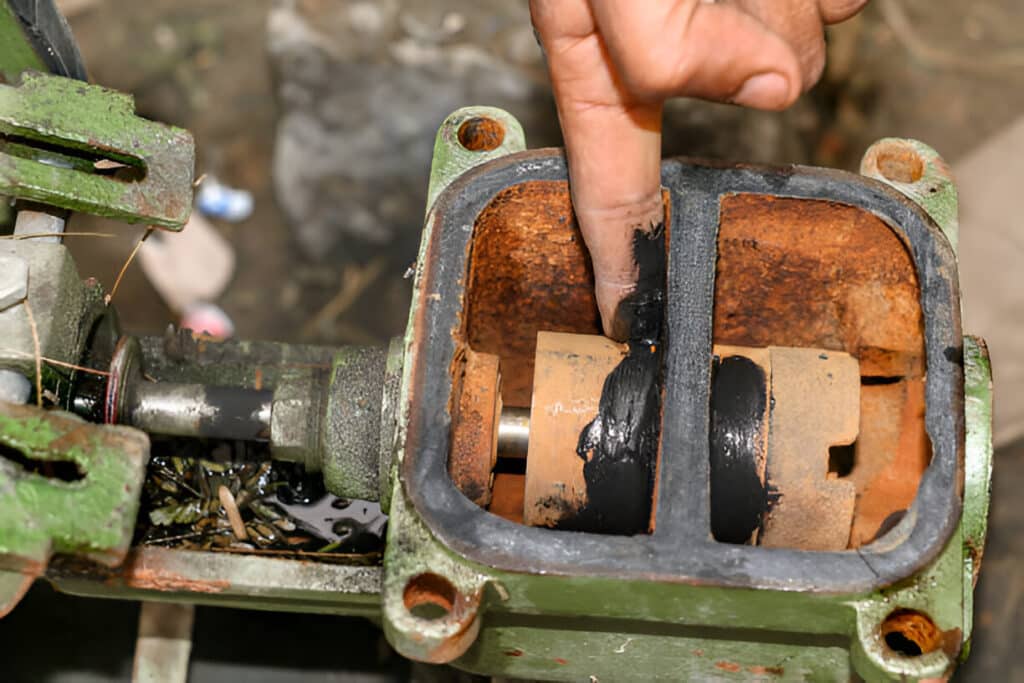
System-Related Issues
Closed or Partially Closed Valves
Closed or partially closed valves in the system can significantly reduce flow rates in centrifugal pumps. Discharge valves, bypass valves, or multiport valves that are not fully open restrict water flow, causing inadequate discharge.
Bypass Line Open
An open bypass line can divert water flow away from the main discharge, resulting in reduced flow rates. Bypass valves left open inadvertently or malfunctioning automatic recirculation valves can cause this issue.
Discharge Head Too High
Excessive discharge head can impede pump flow. This may occur due to increased system resistance, clogged filters, or changes in elevation. High discharge pressure reduces the pump’s ability to move water efficiently.
Vortexing
Vortexing occurs when fluid is drawn too close to an inlet pipe, creating a whirlpool effect. This phenomenon can lead to air entrainment, reducing pump efficiency and flow rate. Signs of vortexing include visible whirlpools, pressure fluctuations, and decreased amperage draw.
To prevent vortexing, ensure proper submergence of the inlet pipe and consider installing anti-vortex plates or vortex breakers.
Clearance Issues
Excessive clearance between the impeller and wear plate or wear rings can significantly impact pump performance. When clearances are too wide for the type of fluid pumped, internal recirculation increases, resulting in lower flow output.
Adjust clearances according to manufacturer specifications to prevent slip and ensure proper flow rates.
Motor Issues
Motor-related problems can contribute to low flow in pumps. These may include incorrect impeller rotation, particularly in three-phase electrical systems where improper phasing can reverse motor direction. Additionally, worn-out bearings or other motor components can lead to reduced performance.
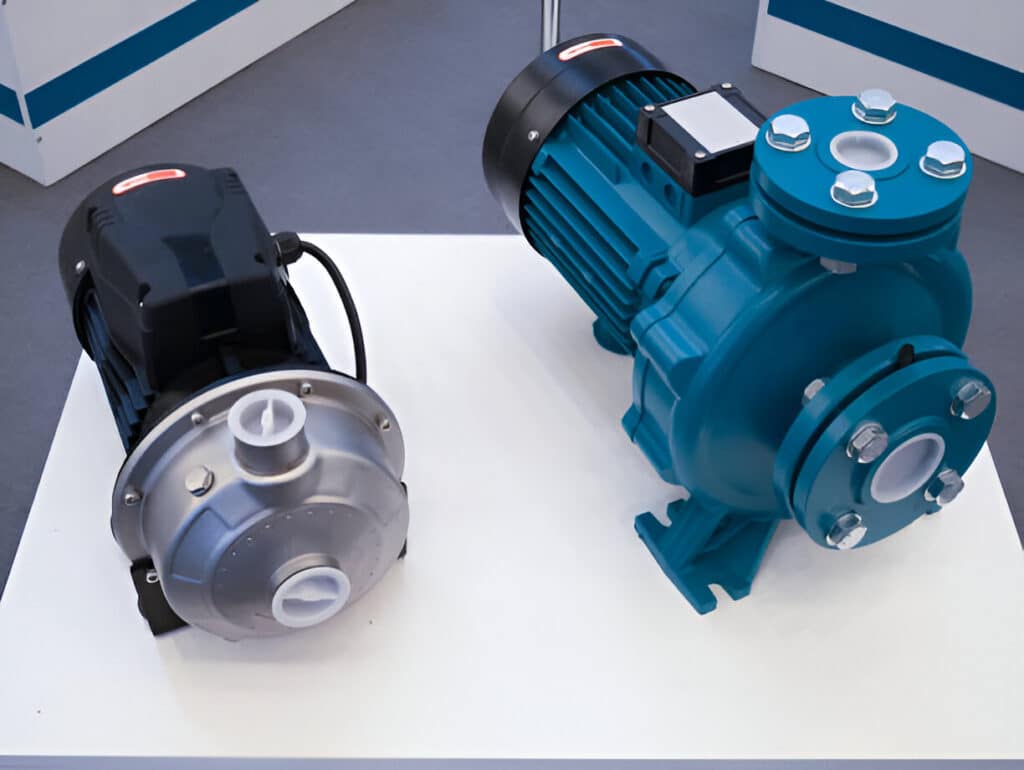
FAQs
What does low pump flow mean?
Low pump flow refers to a reduced volume of liquid moving through a pump system. It indicates the pump is not operating at its optimal capacity. This can result in decreased efficiency and potential system issues.
Can low flow damage a pump?
Low flow can damage a pump by:
- Causing overheating
- Increasing wear on bearings and seals
- Creating cavitation
- Reducing lubrication
- Causing vibration and noise
- Shortening the pump’s lifespan
In Conclusion
Low pump flow can stem from various issues, including excessive clearances, worn components, debris, improper inlet conditions, and motor problems. Regular maintenance and proper installation are crucial for optimal pump performance.
Addressing these common causes can often resolve low flow issues. For persistent problems, consult a pump specialist or the manufacturer for expert assistance.

